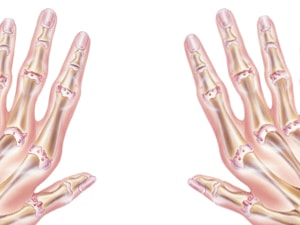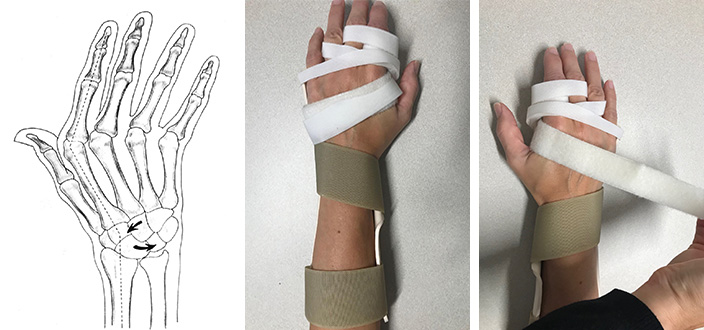Aligning the Zig-Zag Deformity in Rheumatoid Arthritis
January 10, 2023
3 min. read

Rheumatoid arthritis (RA) is a chronic autoimmune disease characterized by inflammatory polyarthritis. It affects about 1 percent of the U.S. population1 and is twice as likely to occur in women.2
Despite the well-advertised medical advances such as the disease-modifying anti-rheumatic drugs (DMARDs), it is important for therapists and patients to understand that RA is still a chronic condition and that patients can benefit from conservative treatment with therapy.
Aligning with an Orthosis
A night orthosis to correctly position this deformitysuch as a splintis helpful to these patients in decreasing pain and actually improving grip strength.3
However, properly fitting an orthosis can be challenging with RA deformities. The metacarpophalangeal (MP) joints of the hand are commonly affected, resulting in MP joint ulnar deviation and volar subluxation.4 It is important to consider the position of the metacarpals, which are often in radial deviation at the carpometacarpal joints. This is especially important when aligning the MP joints, with a passively correctable ulnar deviation deformity, into an orthosis.
This misalignment is called the zig-zag deformity,5 and it can be caused by:
Subluxation of the carpals in an ulnar direction, resulting in radial deviation of the wrist and ulnar deviation of the digits
Extensor digitorum communis decentralization, imbalance of the intrinsics, and the forces of activities of daily living, especially from the thumb during radial pinch, which contribute to MP joint ulnar deviation
Gently aligning the passively correctable MP joints into an anti-ulnar deviation position with a night orthosis is only one step of this process. The therapist must also address the radial deviation issue of the metacarpals with the orthosis.
If the therapist only aligns the MP joint into anti-ulnar deviation, this can aggravate the carpometacarpal joints, adding to radial deviation of the carpometacarpal joints (see illustration below).

Metacarpal strap gently places the metacarpals in anti-radial deviation. The digit straps gently place the MP joints in anti-ulnar deviation.
Orthoses should address both issues of the zig-zag deformity and include anti-radial deviation of the carpometacarpal joints with a strap or padding and anti-ulnar deviation of the MP joints. This should only be completed if the deformity is passively and gently correctable, as forcing these joints can cause additional joint damage.6
Patients with RA who wear a well-fitting orthosis at night report decreased pain and increased grip strength for activities during the day.3,7,8The therapist needs to address both aspects of the zig-zag deformity when fabricating this night orthosis.
To learn more about providing care to patients with rheumatoid arthritis, be sure to check out my Medbridge Course, Care of the Rheumatoid Arthritic Hand.
Below, watch Jeanine Beasley discuss how the zig-zag deformity occurs in this brief clip from her Medbridge course “Care of the Rheumatoid Arthritic Hand."






